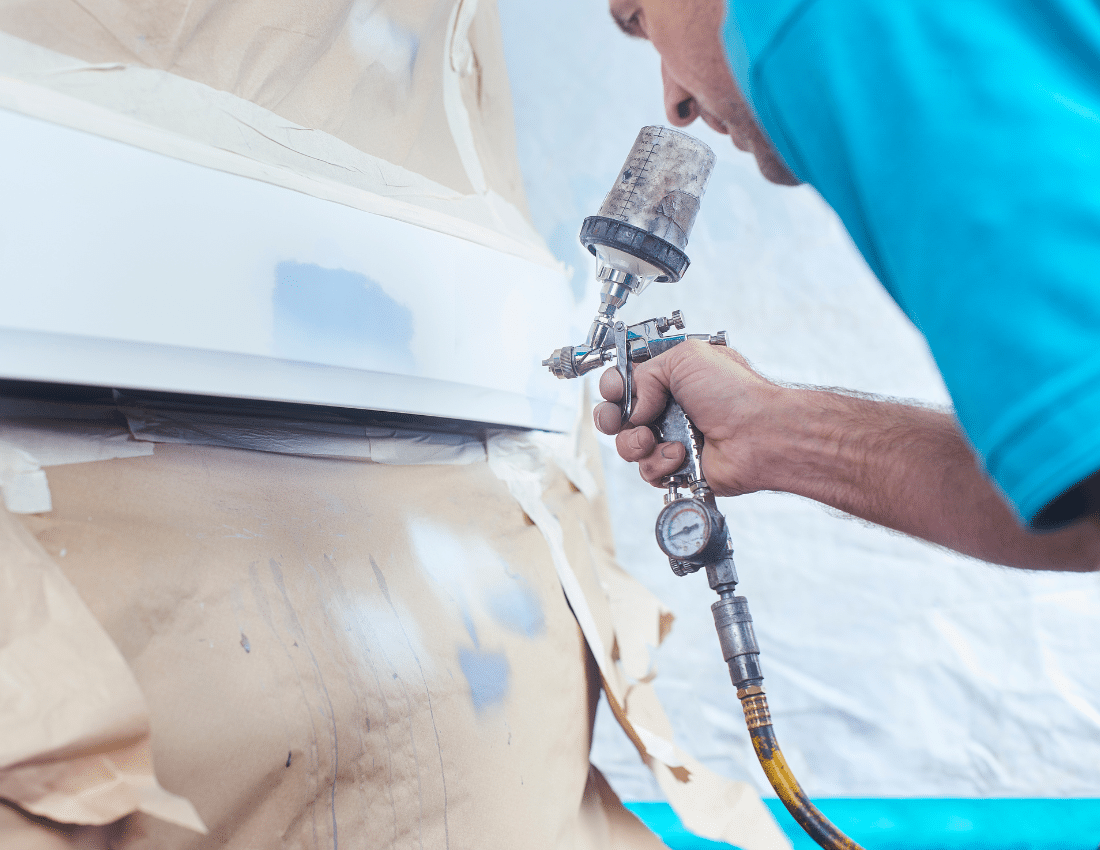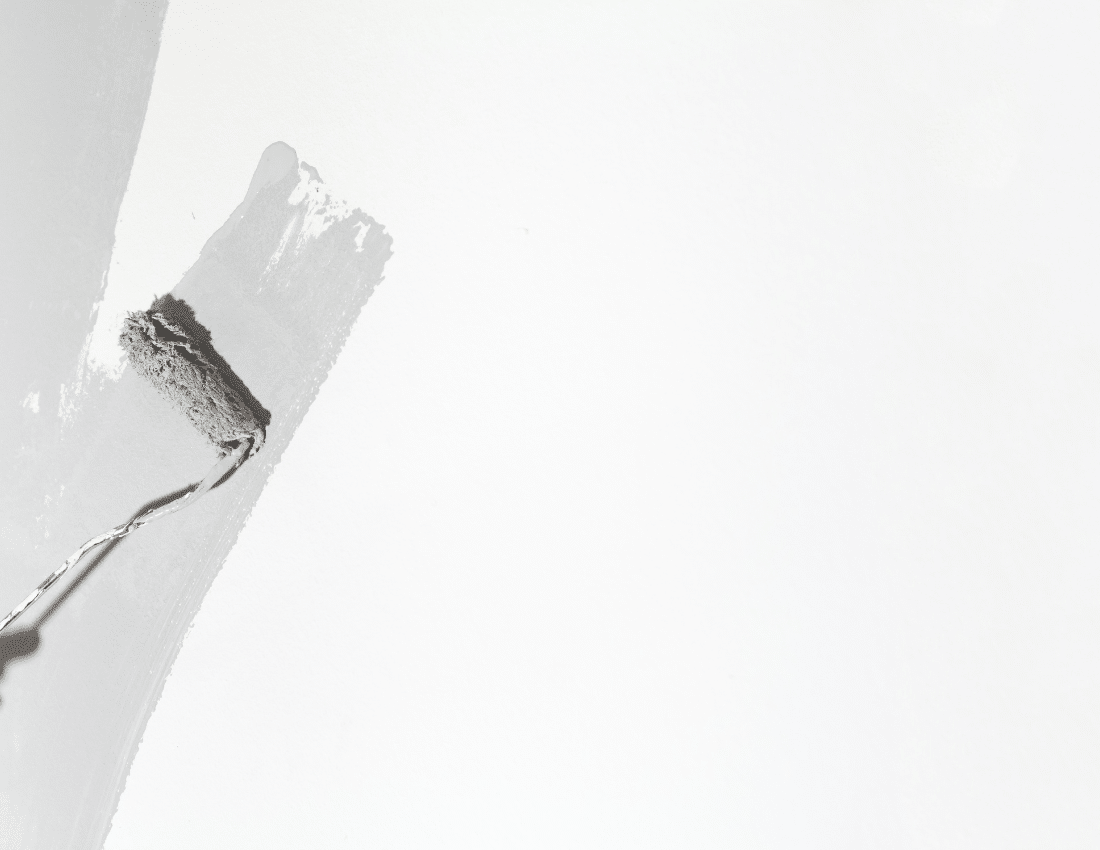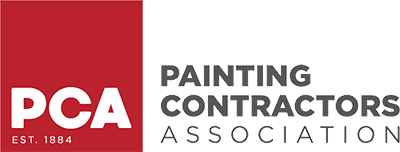Painting your home can refresh its look, improve its value, and protect surfaces from wear and tear. But before picking up a brush, there’s one important decision to make: roller painting vs spray painting.
If you’re working on a house painting project, you might be wondering which method will give you the best results. Some painters swear by rollers for their precision and easy control, while others prefer sprayers for their speed and seamless finish.
The truth is, both have their place, but the right choice depends on factors like surface texture, project size, and personal experience.
Making the wrong decision can lead to streaks, wasted paint, or hours of extra work. This guide will break down everything you need to know about roller painting vs spray painting, including when to use each method, how they compare in cost and efficiency, and what professional house painters in Palm City, FL recommend for different surfaces.
Key Takeaways:
- Roller painting vs spray painting depends on project size, surface texture, and desired finish.
- Spray painting is ideal for large, textured surfaces like brick, stucco, and cabinetry, offering a smooth, professional finish but requiring more prep work.
- Roller painting provides better control, minimal prep, and cost savings, making it best for interior walls, ceilings, and baseboards.
- Sprayers work faster but waste more paint, while rollers use less paint and are easier for beginners.
Why Your Painting Method Matters
It might seem like a simple choice, but how you apply paint has a big impact on the final result. The wrong method can lead to uneven coverage, wasted paint, or surfaces that don’t hold up over time.
Here’s why your painting method matters:
- Finish quality: Sprayers provide a smooth, factory-like finish with no roller texture, while rollers lay down a thicker, controlled coat that hides imperfections.
- Time and effort: A sprayer covers large areas quickly, but requires a lot of prep work. Rolling takes longer but allows for a more controlled application.
- Cost efficiency: Sprayers use more paint because of overspray, while rollers are more budget-friendly and reduce waste.
- Durability and adhesion: Some surfaces hold paint better with one method over the other. Rough, porous materials like brick and stucco absorb paint differently than smooth surfaces like drywall or cabinets.
When to Use a Paint Sprayer

A paint sprayer applies paint as a fine mist, which allows for even, full coverage on large or detailed surfaces. It’s the go-to choice for professional painters when speed and a seamless finish are top priorities.
Best Surfaces for Spray Painting
Professional house painters in Palm City, FL often turn to spray painting for surfaces that are challenging to cover with a roller or brush. The fine mist from a sprayer allows for even application, reaching grooves, crevices, and textured areas where rollers might struggle.
- Textured and detailed surfaces: Spray painting is an excellent choice for popcorn ceilings, brick, stucco, and rough wood grain. These surfaces absorb paint unevenly when rolled, often requiring multiple coats to achieve full coverage. A sprayer distributes paint evenly across textured surfaces, preventing excessive buildup in some areas while leaving others undercoated. This ensures a consistent finish without the risk of clumps or patchy spots.
- Large exterior projects: When it comes to home exteriors, fences, and garage doors, time and efficiency are major factors. Rolling large areas can be a slow process, requiring multiple dips and applications. A sprayer, on the other hand, covers large surfaces quickly and seamlessly, significantly reducing the time spent on exterior projects. This makes it the preferred method for professional house painters tackling large-scale jobs.
- Cabinetry and furniture: Smooth, uniform finishes are essential for kitchen cabinets, built-in shelving, and furniture refinishing. A paint roller can leave behind subtle texture or roller marks, while a sprayer applies a fine, even coat that mimics a factory finish. This method is particularly useful for cabinets and furniture with intricate moldings, recessed panels, or detailed edges where rollers and brushes may struggle to reach.
Advantages of Spray Painting
- Speed: A sprayer is the fastest way to apply paint to large or complex surfaces. Unlike a roller, which requires frequent dipping and reloading, a sprayer continuously applies paint, covering wide areas in significantly less time. This efficiency makes spray painting ideal for projects where speed is a priority, such as exterior house painting or commercial buildings.
- Seamless finish: Unlike rollers, which can leave a slight texture on the surface, a sprayer creates a smooth, even coat with no visible application marks. This is especially important for cabinets, trim, and furniture, where a polished, professional look is the goal. For homeowners who want a sleek, modern finish, spray painting is often the best choice.
- Better coverage on rough surfaces: When painting stucco, brick, or deeply textured drywall, a sprayer ensures full coverage without requiring excessive coats. Rollers can struggle to reach into grooves and recessed areas, leaving behind uncoated spots or uneven thickness. Spray painting allows paint to penetrate all areas evenly and effectively, reducing the need for extra layers.
Challenges of Spray Painting
Requires extensive prep work: Because spray painting creates overspray, everything that isn’t being painted needs to be thoroughly masked and covered. This includes windows, floors, furniture, and trim.
Unlike rolling, where you can carefully work around edges, spray painting requires complete protection of surrounding areas to prevent accidental coverage. This extra step adds to the overall time required for the project.
- More paint waste: A sprayer releases a fine mist, meaning some of the paint does not adhere to the intended surface. This can lead to higher paint consumption and increased costs, making spray painting less efficient in terms of material use. For homeowners working within a budget, rolling may be the more cost-effective option.
- Learning curve: Using a sprayer requires skill and technique. If applied incorrectly, it can result in drips, uneven coverage, or streaks. Sprayers need to be held at the right distance and moved consistently to avoid pooling or thin spots. Without prior experience, homeowners may find it difficult to achieve the smooth, even finish that spray painting is known for.
For projects like furniture or cabinets, a sprayer delivers a smooth, professional finish. However, if you’re dealing with paint peeling off cabinets, it may be a sign of adhesion issues.
When to Use a Paint Roller

A paint roller is the most common choice for homeowners and DIY painters because it provides control, consistency, and ease of use. It’s ideal for projects that require clean lines and even coverage without excessive prep work.
Best Surfaces for Roller Painting
Professional house painters in Palm City FL often rely on rollers for projects that require precision, control, and even application. While sprayers can provide a seamless finish, rollers are the preferred choice for most interior projects due to their ease of use and reduced prep time.
- Interior walls: When painting bedrooms, living rooms, kitchens, or hallways, a roller provides even coverage without the mess of overspray. Since most interior walls are smooth, rollers allow for consistent paint application, preventing drips and streaks. Rolling also makes it easier to cut in around edges, door frames, and baseboards without excessive masking. It’s best to choose non-toxic interior paint, especially for bedrooms and kitchens, to maintain better indoor air quality.
- Ceilings: Using a sprayer indoors can create a fine mist of paint that settles on floors, furniture, and fixtures. Rollers are a more controlled option for ceilings, ensuring that paint goes only where it’s intended. They also prevent paint mist from drifting down, keeping cleanup to a minimum.
- Baseboards and trim: While a small brush is often used for detailed trim work, a mini roller can speed up the process and provide a smoother, more uniform application. A roller allows for clean, precise edges without leaving visible brush strokes, making it ideal for baseboards, door frames, and molding.
- Drywall: Freshly installed drywall absorbs paint differently than other surfaces, and a roller is an excellent choice for achieving full coverage with minimal waste. Unlike textured surfaces that require multiple passes with a sprayer, drywall is smooth and takes paint well with a roller. This makes it the best option for newly built homes, renovations, or wall repairs.
Advantages of Roller Painting
- Easier for beginners: Unlike sprayers, which require proper nozzle selection, spray technique, and pressure adjustments, rollers are straightforward to use. Even for first-time painters, rolling provides consistent results without the risk of streaks, drips, or uneven coverage.
- Minimal prep work: Spray painting requires extensive masking to prevent paint from settling on unintended surfaces. With rolling, there’s less need for taping and covering—just place a drop cloth on the floor, tape off baseboards if necessary, and you’re ready to start. This makes rolling a faster and less labor-intensive setup compared to spray painting.
- More cost-effective: Paint sprayers tend to use more paint due to overspray and mist loss. Rollers, on the other hand, apply paint directly onto the surface, minimizing waste. This makes roller painting a more budget-friendly option, especially for large-scale interior projects where multiple rooms need to be painted.
Challenges of Roller Painting
- Takes longer: Unlike a sprayer, which can coat an entire wall in minutes, rollers require multiple passes and reloading. This makes rolling a slower process, particularly for large areas or multiple rooms. However, for many homeowners, the trade-off of precision and ease of use is worth the extra time.
- Not ideal for textured surfaces: Rollers are great for smooth walls, but they can struggle to reach deep grooves, cracks, or raised textures. When painting surfaces like stucco, brick, or popcorn ceilings, a roller may leave uneven coverage or require multiple coats to achieve the desired finish.
- Can leave roller marks: If too much pressure is applied or the roller isn’t fully loaded with paint, it can leave streaks or roller marks on the surface. Using the right paint roller type and technique—such as applying consistent pressure and working in sections—helps prevent this issue.
Choosing the right painting method is only part of the process—using the right interior paint type ensures durability and the best finish for your space. For expert recommendations on finishes, longevity, and ideal applications, check out interior paint types and tips.
Comparison: Roller Painting vs Spray Painting
Choosing between roller painting vs spray painting depends on your project type, experience, and goals. Here’s a summary of the things we covered:
| Feature | Spray Painting | Roller Painting |
|---|---|---|
| Speed | Faster coverage | Slower application |
| Prep Work | Requires extensive masking | Minimal masking required |
| Coverage | Best for textured surfaces | Better for smooth walls |
| Finish | Factory-smooth | Can leave subtle roller texture |
| Cost Efficiency | Uses more paint | Less waste, more affordable |
| Ease of Use | Requires skill to avoid drips | Easier for beginners |
| Best For | Large exteriors, cabinets, furniture | Walls, ceilings, baseboards |
Still not sure? Our house painters in Palm City FL can help you make the right choice for your home.
Home Perspective Painting & Staining’s Painting Process & How We Can Help
Every successful painting project starts with the right preparation, tools, and professional expertise.
What we offer:
- Surface preparation: Cleaning, drywall repair, and primer application for the best adhesion.
- Masking & protection: Covering floors, windows, and fixtures to keep your space clean.
- Expert application: Using the right painting tools for a long-lasting, professional finish.
- Final touch-ups & cleanup: Ensuring your home looks polished with no mess left behind.
We proudly serve West Palm Beach, Wellington, Boynton Beach, FL, and the surrounding areas. Call us at 772-261-9133 for your FREE estimate today!

